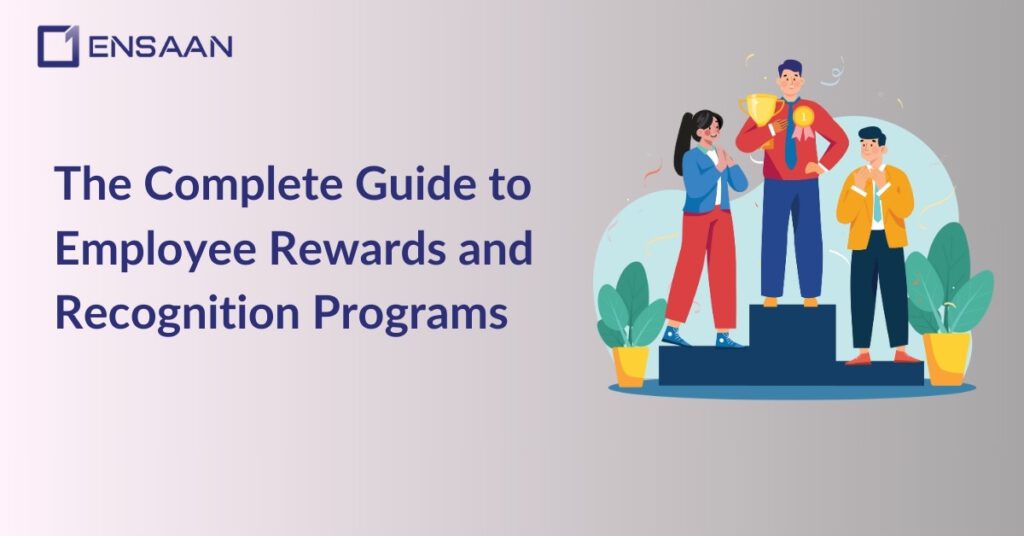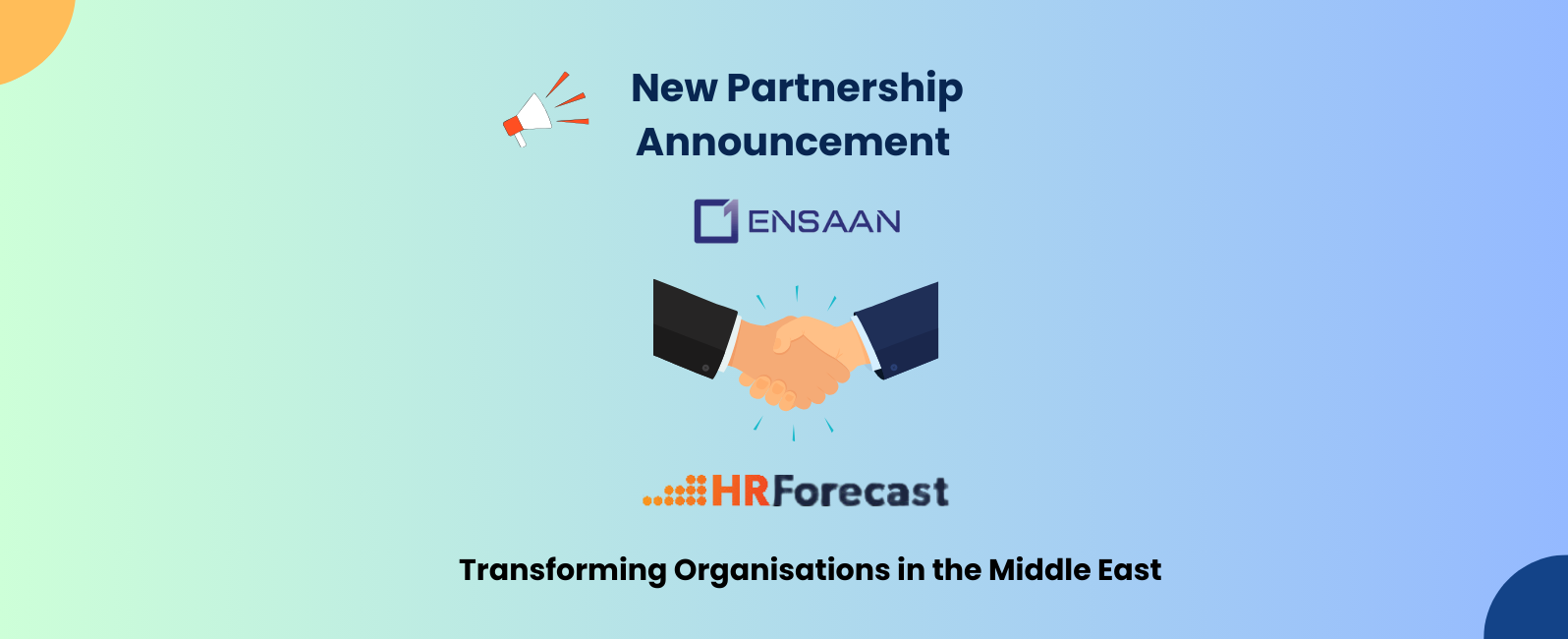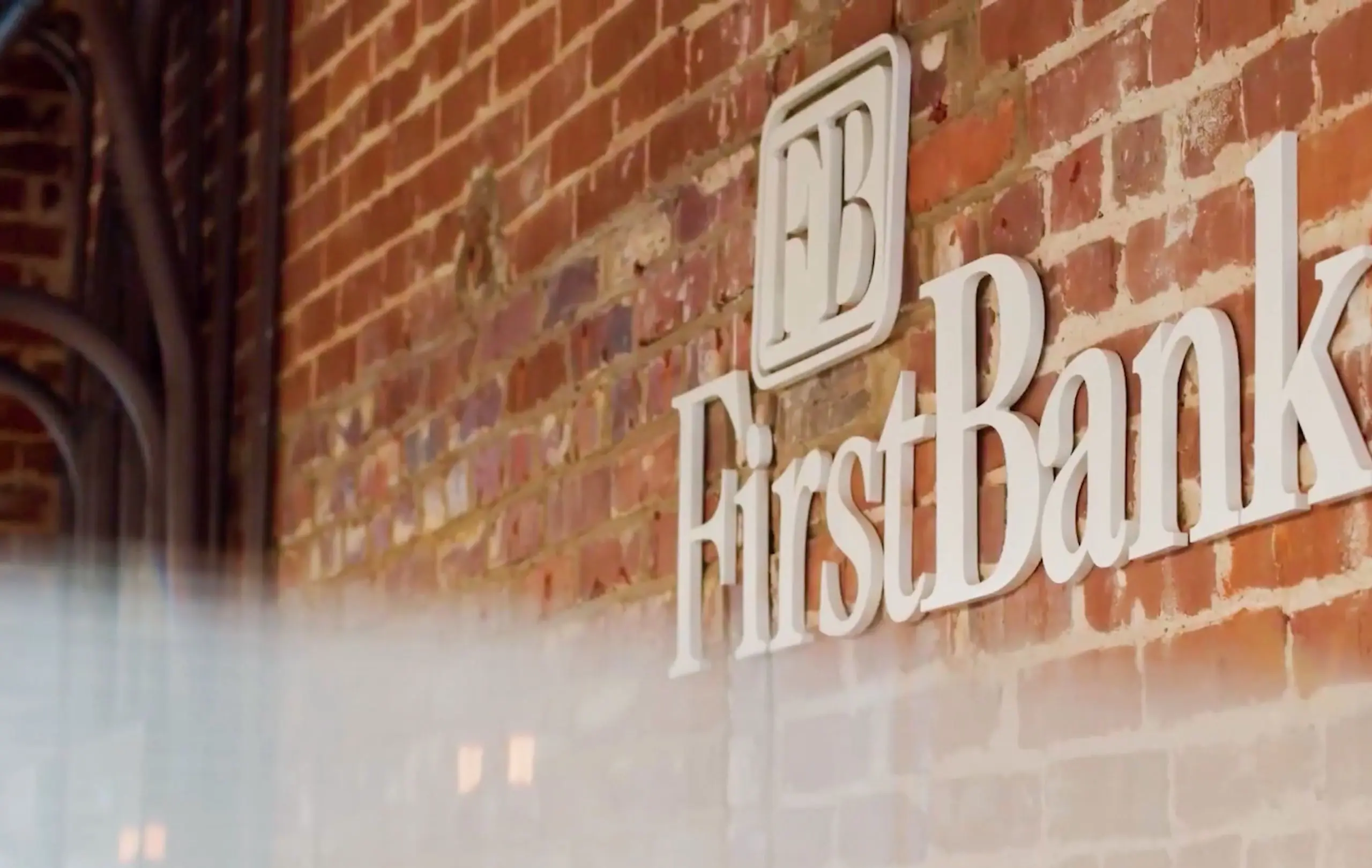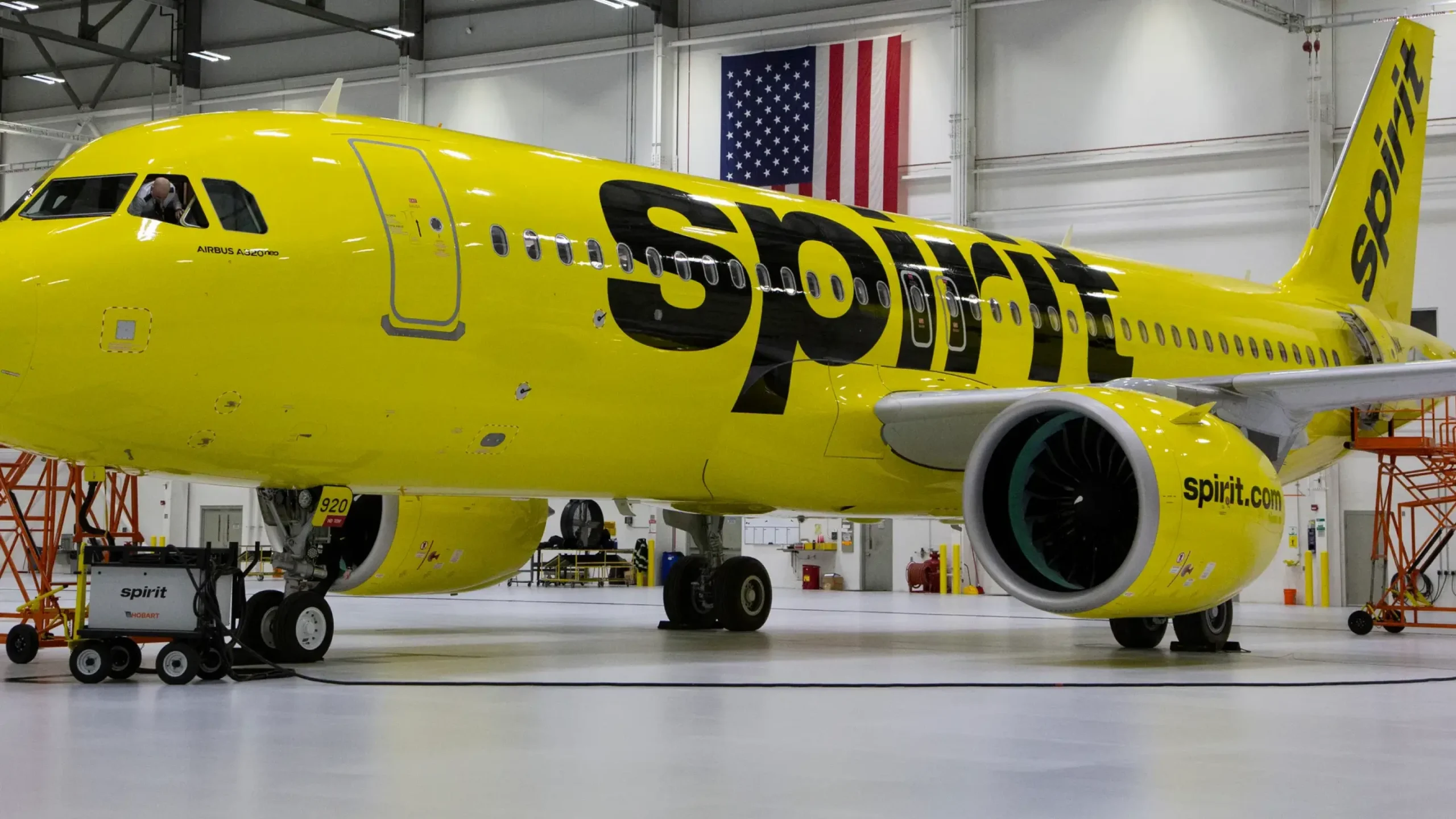Reward and recognition programs for employees can be powerful tools for raising morale, increasing productivity, and keeping key talent.
Employers that prioritize employee happiness and engagement will likely achieve more success in today’s unpredictable job market.
But what exactly are employee rewards and recognition programs, and how can they be effectively implemented?
This comprehensive guide will walk you through everything you need to know about employee rewards and recognition programs, including how platforms like Xoxoday and its offerings Plum, Empuls, and Compass can help streamline and enhance these initiatives.
Table of Contents
- What Are Employee Rewards and Recognition Programs?
- Why Are Employee Rewards and Recognition Programs Important?
- Types of Employee Rewards and Recognition Programs
- How to Implement an Effective Employee Rewards and Recognition Program?
- Best Practices for Employee Rewards and Recognition Programs
- Common challenges & Solutions in Employee Rewards and Recognition Program
- Examples of Successful Employee Rewards and Recognition Programs
- How Xoxoday Can Help?
- Conclusion
- FAQs
What Are Employee Rewards and Recognition Programs?
Employee rewards and recognition programs are organized systems designed to honor, recognize, and thank employees for their hard work, achievements, and contributions.
Financial bonuses and public recognition play an integral part in creating an enjoyable workplace environment.
Key Components:
- Rewards: Physical benefits such as bonuses, gift cards or extra time off may also be received as physical incentives.
- Recognition: Verbal or written acknowledgment of an employee’s efforts, often in a public setting.
Why Are Employee Rewards and Recognition Programs Important?

Employee recognition means showing our appreciation and respect for their efforts and accomplishments.
Morale is increased, burnout avoided and an environment where employees feel valued is fostered by creating an engaging work experience.
Recognizing their efforts immediately makes them feel valued and helps maintain motivation.
Employee recognition programs take this a step further by formalizing appreciation.
These programs recognize milestones and recognize exceptional work through thank-you messages, team awards and innovative incentives.
1. Boosts Employee Morale:
Rewarding employees efforts make them feel valued and appreciated, thus improving morale and job satisfaction.
2. Increases Productivity:
Happy employees are more productive. Recognition and rewards can motivate employees to put in their best effort.
3. Enhances Employee Engagement:
Engaged employees are more committed to their work and the organisation. Recognition programs help foster employee engagement.
4. Reduces Turnover:
Employees who feel valued within their workplace tend to stay longer, decreasing turnover costs associated with hiring and training new staff.
5. Improves Workplace Culture:
An environment of recognition fosters teamwork, collaboration, and creates an enjoyable work environment.
Types of Employee Rewards and Recognition Programs
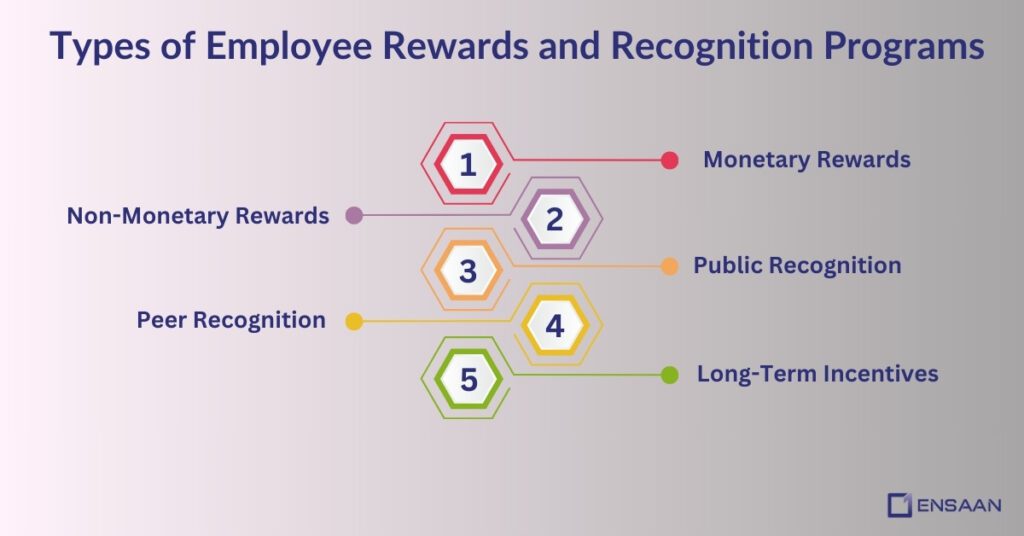
Reward and recognition programs come in all shapes and sizes, each providing its own set of advantages. Here are a few popular examples:
1. Monetary Rewards:
- Bonuses: Bonuses are cash rewards given out when performance targets are achieved or exceeded.
- Gift Cards: Prepaid gift cards available from popular retailers or restaurants makes an ideal present.
- Profit Sharing: Distribution of part of the company’s profits among employees as profit sharing arrangements.
2. Non-Monetary Rewards:
- Extra Time Off: Extra Time Off (ATL), such as additional vacation days or flexible working hours.
- Experiences: Tickets to events, travel vouchers or unique adventures make wonderful presents.
- Personal Development: Opportunities for further education, training or professional advancement.
3. Public Recognition:
- Employee of the Month: Employee of the Month Award – Recognise and celebrate outstanding performance each month!
- Shout-Outs: Acknowledging an individual publicly in meetings, newsletters or on social media.
- Awards Ceremonies: Formal events to celebrate employee achievements.
4. Peer Recognition:
- Peer-to-Peer Programs: Peer-to-Peer programs allow employees to recognise and reward one another’s efforts.
- Team Awards: These honor team achievements while cultivating Companionship among team members.
5. Long-Term Incentives:
- Stock Options: Stock options provide employees a stake in the company future success and give employees a sense of ownership in its future success.
- Retirement Plans: Enhancing retirement benefits for long-term employees.
How to Implement an Effective Employee Rewards and Recognition Program?
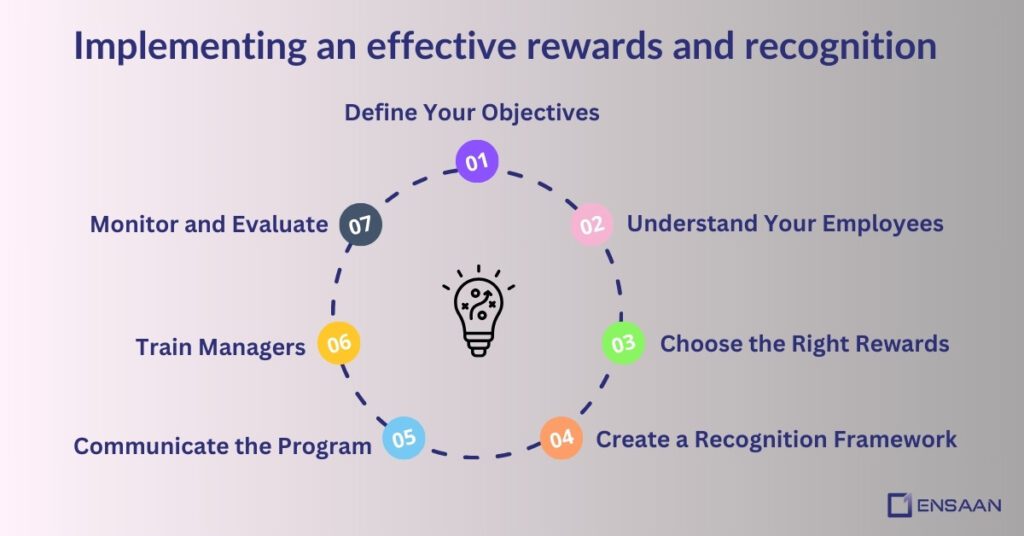
Implementing an effective rewards and recognition program takes careful planning and execution, so here’s a step-by-step guide to get you going:
1. Define Your Objectives:
Set clear objectives for your program. Whether that be improving morale, increasing productivity or decreasing turnover rates – having clear goals will serve to direct your efforts more effectively.
2. Understand Your Employees:
Employees value different forms of recognition in different ways; conduct surveys or interviews to understand which are most motivating for your team.
3. Choose the Right Rewards:
Your employees have their own preferences when it comes to rewards; therefore, select a combination of monetary and non-monetary prizes that meet those preferences while remaining aligned with your company values.
4. Create a Recognition Framework:
Develop a structured framework for how and when recognition will be given. This could include regular intervals (e.g., monthly) or specific milestones (e.g., project completion).
5. Communicate the Program:
Make sure all employees understand how your program works, its rewards and how recognition will occur.
6. Train Managers:
Provide your managers with the skills and knowledge to recognize and reward their teams effectively – an integral factor for program success.
7. Monitor and Evaluate:
To maximize program effectiveness and employee feedback collection, regularly evaluate its success by tracking its effectiveness and collecting employee responses for feedback purposes. Use this feedback to make any necessary adjustments or enhancements.
Best Practices for Employee Rewards and Recognition Programs
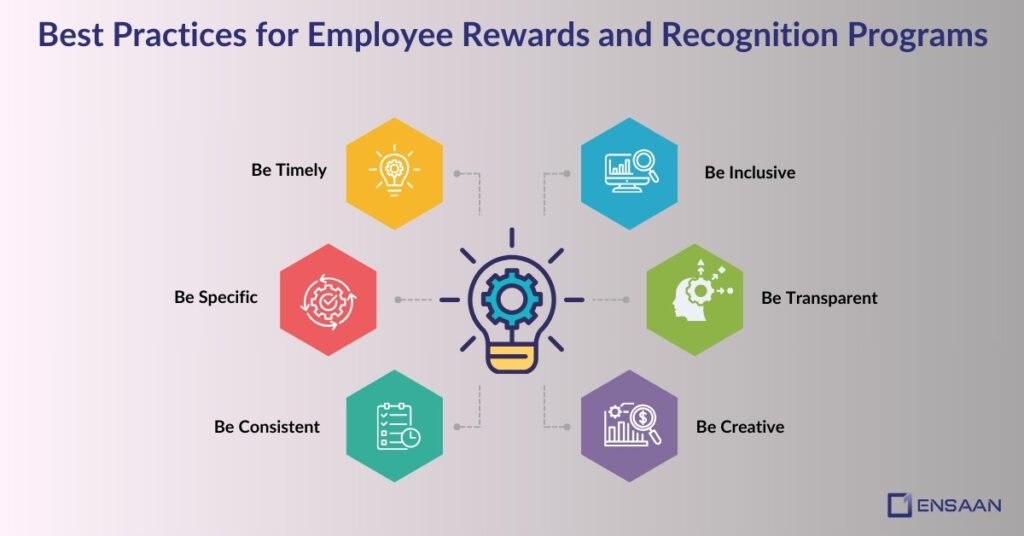
To ensure the success of your program, follow these best practices:
1. Be Timely:
Acknowledging employees achievements immediately can enhance its impact. Waiting can reduce its significance.
2. Be Specific:
Be as specific as possible in outlining exactly what the employee did to earn recognition – doing this will increase its impact and make the award truly meaningful.
3. Be Consistent:
Apply the program consistently across the organisation to avoid perceptions of favouritism or bias.
4. Be Inclusive:
Make sure all employees have equal opportunities to be recognized regardless of their role or position in the organization.
5. Be Transparent:
Maintain complete transparency in regard to how rewards are determined and distributed, to build trust and credibility within the program.
6. Be Creative:
Stay innovative by constantly adding new rewards and recognition methods into the program.
Common challenges & Solutions in Employee Rewards and Recognition Program
Implementing a rewards and recognition program can present its own set of unique challenges. Here is how to address them:
1. Lack of Budget:
Solution: Focus on non-monetary rewards and low-cost recognition techniques such as thank-you notes. Even simple gestures like giving praise will go a long way toward encouraging employees.
2. Inconsistent Application:
Solution: Create clear guidelines and train managers in their implementation of the program for consistent implementation of its entirety.
3. Lack of Employee Engagement:
Solution: Involve employees in the design and implementation of your program to meet their needs and preferences.
4. Measuring Effectiveness:
Solution: Using surveys, feedback forms and performance metrics as measures of impact is one way to continually assess a program and make necessary modifications as it evolves.
Examples of Successful Employee Rewards and Recognition Programs
Here are a few examples of companies who have successfully implemented rewards and recognition programs:
1. Google:
Google offers its employees various incentives, from peer recognition programs and performance bonuses to special perks like complimentary meals and on-site wellness services.
2. Salesforce:
Salesforce has a comprehensive recognition program that includes monetary rewards, public recognition, and opportunities for professional development.
3. Zappos:
Zappos is known for its culture of recognition, with programs that include peer-to-peer recognition, employee of the month awards, and unique rewards like paid time off for volunteering.
How Xoxoday Can Help?
Xoxoday is a leading platform that simplifies the implementation of employee rewards and recognition programs.
It offers three powerful products Plum, Empuls, and Compass to help organizations create impactful and engaging programs.
1. Plum:
A rewards and incentives platform that allows organizations to offer personalized rewards like gift cards, experiences, and merchandise.
Key Features:
- Customizable reward options.
- Seamless integration with HR systems.
- Real-time tracking and analytics.
How It Helps: Plum makes it easy to reward employees with meaningful incentives that align with their preferences, boosting engagement and satisfaction.
2. Empuls:
An employee engagement platform designed to foster recognition, communication, and collaboration.
Key Features:
- Peer-to-peer recognition tools.
- Social recognition feeds and shout-outs.
- Surveys and feedback mechanisms.
How It Helps: Empuls creates a culture of appreciation by enabling employees to recognize each other’s efforts and stay connected.
3. Compass:
A sales performance management platform that includes rewards and recognition features to motivate sales teams.
Key Features:
- Gamification and leaderboards.
- Incentive programs for sales achievements.
- Real-time performance tracking.
How It Helps: Compass drives sales team performance by combining recognition with actionable insights and rewards.
By leveraging Xoxoday suite of products Plum, Empuls, and Compass organizations can create a holistic rewards and recognition program that caters to diverse employee needs and drives engagement.
Conclusion
Employee rewards and recognition programs are essential for fostering a positive work environment, boosting morale, and retaining top talent.
By understanding your employees’ needs, selecting meaningful rewards, and implementing a structured program, you can create a culture of appreciation that drives organizational success.
Platforms like Xoxoday can further enhance these efforts by providing customizable, easy-to-use solutions that make recognition timely, meaningful, and impactful.
Investing in a well-designed rewards and recognition program not only benefits your employees but also contributes to the long-term success of your organization.
FAQs
An employee rewards and recognition program (ERRP) are an initiative designed to recognize employees for their hard work and accomplishments, thus improving morale and engagement within an organization.
They improve employee satisfaction, productivity and retention while creating a positive workplace culture.
Rewards may include both financial (bonuses or gift cards) and non-financial incentives like extra time off work, public recognition or professional development opportunities.
First, identify goals. Next, research employee preferences before choosing meaningful rewards that provide meaning in return. Finally, establish an accountability structure and communicate its benefits effectively.
Reward can come in the form of physical items (bonuses, gifts), while recognition takes the form of verbal or written appreciation (shout-outs or awards).

